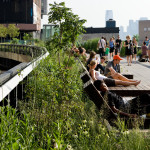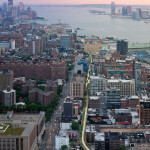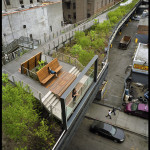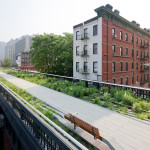Building a Community: Part 1
By Kimberly Rene’ Vanecek
Reed Kroloff an internationally renowned architect and Director of the Cranbrook Academy of Art and Museum spoke recently as part of the architectural series sponsored in part by Texas Tech College of Architecture at El Paso, in partnership with the City of El Paso Department of Planning and Economic Development, the El Paso Museum of Art, and the Museums and Cultural Affairs Department.
A group of forty or so individuals comprised of students, businessmen, politicians, philanthropist, teachers and architects attended the lecture at The El Paso Museum of Art. Reed spoke eloquently about his forte, architecture. It wasn’t a lecture on clean lines and empty spaces or blowing up the past to make way for the future. It was on respecting the legacy of the city, why iconic buildings work and how a competition can unite the community with results that generate economic impact.
Kroloff, a natural speaker, used no scripts or teleprompters. All of his thoughts were effectively communicated as he crossed back and forth on the stage while he showed slides of one of the most successful architectural contest in the country. He spoke about what is now the second largest tourist attraction in New York City, the High Line, and how it helped to unite a city. The High Line was originally an elevated historic freight rail system created in 1929 and it was a 13-mile project that eliminated 105 street-level railroad crossings. Decades later, with a portion of the line destroyed and the remainder in disarray, there came a group who lobbied to demolish the remainder of the railway.
“Initially, it took the work of only two men who lived in the Chelsea area, where the railway passed, to create some noise. Those two individuals would sneak politicians, concerned parties, and people with connections, up to the deserted rail system at night. It was a strategic opportunity to show how with all the lights of the city illuminating the rail system, this landmark could evolve beyond the heap of metal it had become. Not till then did a sense of awareness begin to cultivate and spread in an effort to preserve the structure, “noted Kroloff.
What happened next was a key piece in why the renovation of the railway was incredibly successful. As the city decided to embrace the idea of forging forward with the preservation concept, they had a “call out” to architects to submit their ideas to transform the 1.45 miles of railway into a functional piece of property that would be welcomed into the community and draw visitors to the area.
Everyone was invited to provide renderings of their concept. The city then placed all of the submissions in a location that could be viewed by a large group of people on a continuous basis, the Grand Central Station, where everyday 750,000 visitors pass through the hub. Engaging the community to utilize their voices and call their city representatives was powerful. It allowed the residents to see exactly what was being proposed and how many ideas were being considered. The High Line is now a park that has flora incorporated in the rails, walkways, trails, and lounge areas. It is an area that supports cultural events as well as serving as an architectural platform.
Photographed by Iwan Baan







